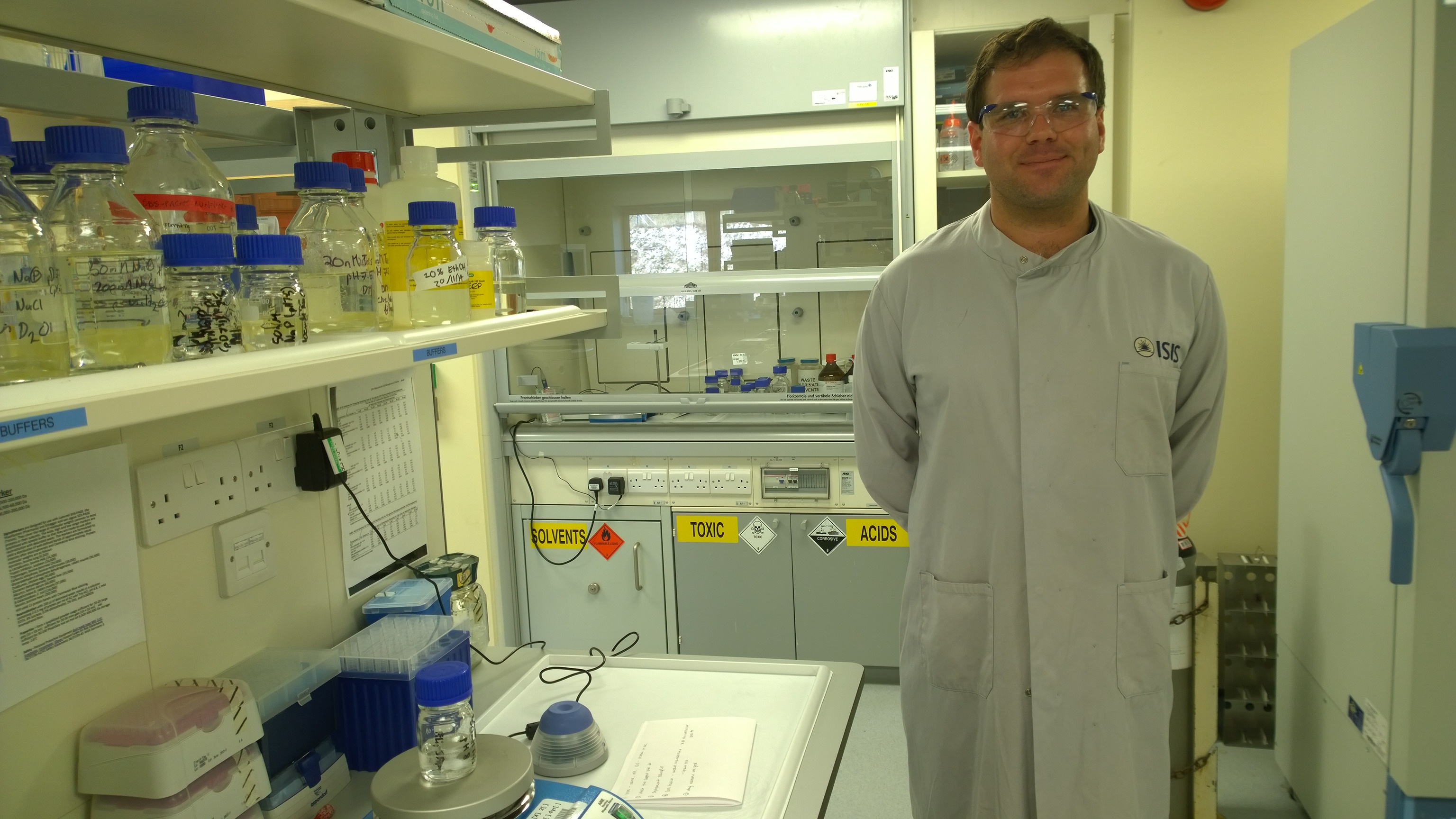This model of E. coli will be an important tool in drug design and developments, especially for antibiotics.
“We have built, for the first time, a working bacterial membrane,” says lead author Professor Jeremy Lakey, Newcastle University. “Now we can find out how the membrane works and design drugs to cross it.”
The research, supported by the Wellcome Trust, has been published as a ‘Hot Paper’ in the journal Angewandte Chemie International Edition, and now highlighted in Nature Chemical Biology.
The model, which is only 1/10,000th the thickness of a sheet of A4 paper, was constructed at ISIS using a combination of neutron scattering and isotopic labelling experiments. Scientists were able to confirm not only the structure but also the thickness, density and chemical make-up of the model.

ISIS Scientist, Luke Clifton in one of the Biological Support Laboratories at ISIS
View full-size image
“Neutron scattering allows us to resolve complex structures composed of mixtures of biomolecules,” says joint author and ISIS scientist, Luke Clifton. “Using isotopic labelling, we were able to determine the relative positions of the different components in the model.”
For more information, please visit the ISIS Science Highlight or Nature Chemical Biology Highlight.
Further information can also be found on the STFC website and Newcastle University website.
The original research paper, published in Angewandte Chemie International Edition can be found here.
